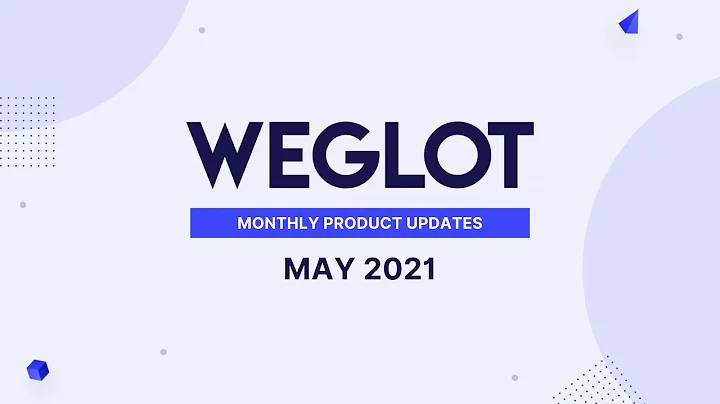Optimize Shopify Images for Speed & SEO
Table of Contents:
- Introduction
- The Importance of Image Optimization
- Understanding Image File Size and Format
- Choosing the Right Image Dimensions
- JPEG vs PNG: When to Use Each
- Manual Image Compression Process
- Bulk Image Compression Process
- Using Shopify Apps for Image Compression
- The Role of Alt Text in SEO
- Renaming Image Files for Improved SEO
- Conclusion
The Importance of Image Optimization for Shopify Stores
When it comes to optimizing a Shopify store for speed and SEO, one of the first areas to focus on is image optimization. It may not be the most critical factor for speed optimization, but it is often an overlooked aspect that can significantly impact a store's performance. This article will guide you through the essential steps of optimizing images for your Shopify store to ensure faster loading times and improved SEO.
Introduction
When working on speed and SEO optimization for a Shopify store, it is crucial to start with checking the images. Many Shopify stores make the common mistake of using images that are either too heavy or not saved in the correct format, which can negatively impact website performance. In this article, we will walk you through the necessary steps for optimizing your images from selecting the right format and size to compressing them and adding essential SEO information. We will also discuss the difference between JPEG and PNG formats and provide tips for manual and bulk image optimization. Additionally, we will explore the role of alt text and renaming image files for improved SEO. So let's dive in and optimize your images for maximum performance and search engine visibility!
The Importance of Image Optimization
Before exploring the technical aspects of image optimization, it's essential to understand why it is crucial for your Shopify store. Image optimization directly impacts two vital aspects of your website: speed and SEO.
Speed Optimization:
Images can significantly slow down a website's loading time, resulting in a poor user experience and lower search engine rankings. By optimizing your images, you can reduce their file size and dimensions, allowing your web pages to load faster and improve overall site performance.
SEO Optimization:
Optimizing images for SEO involves adding relevant alt text and renaming image files with descriptive keywords. Search engines use this information to understand the context and relevance of the images on your website. By properly optimizing your images, you can enhance your site's visibility in search engine results and attract more organic traffic.
In the following sections, we will guide you through the step-by-step process of image optimization, from selecting the right file format and size to bulk compression and SEO optimization techniques.
Understanding Image File Size and Format
One of the primary considerations for image optimization is reducing the file size without compromising quality. While image dimensions play a role in file size, it is crucial to focus on the actual file size in kilobytes (KB) or megabytes (MB). As a general rule of thumb, aim for image sizes no larger than 400-500 KB for full-screen hero images, and avoid JPEG files exceeding 1 MB.
The choice between JPEG and PNG formats also plays a significant role in file size and quality. JPEG is typically suitable for photographs, offering good compression while preserving visual details. PNG, on the other hand, is ideal for computer graphics, such as logos and icons, as it supports transparency. However, if transparency is required, as in the case of product images with a cut-out background, PNG should be used.
In the next sections, we will delve deeper into image dimensions, best practices for each format, and provide practical tips for selecting the appropriate format and reducing file size.
Choosing the Right Image Dimensions
While image dimensions contribute to file size, they are not the primary factor for optimization. However, adhering to a general guideline can help ensure your images are appropriately sized for optimal performance. Aim for a maximum width or height of 2000 pixels for most images, which is suitable for displaying them on Shopify. Images smaller than 500 pixels may be too small unless they are icons or thumbnails.
Remember, Shopify automatically scales down images to fit the required dimensions for your theme, so it's safe to upload larger images within reason. Uploading larger images allows them to be resized effectively, while uploading small images can result in pixelation and reduced quality.
JPEG vs PNG: When to Use Each
Understanding the difference between JPEG and PNG formats is crucial for image optimization. In general, JPEG is suitable for photographs, while PNG is ideal for computer graphics. However, there are exceptions to this rule.
JPEG should be used for photographs as it offers effective compression without significant loss of visual quality. On the other hand, PNG is suitable for computer graphics like logos and icons, as it supports transparent backgrounds. You should avoid using PNG for photographs, as it typically results in large file sizes.
It's important to note that if you require images with transparency, such as product images with cut-out backgrounds, PNG should be used. However, keep in mind that transparency in images can sacrifice loading speed, as these PNG images tend to have larger file sizes.
In the next sections, we will explore how to manually compress images using tools like Squoosh or Tiny PNG and how to automate this process using Shopify apps like Crush Pics.
Manual Image Compression Process
Manually compressing images involves using tools like Squoosh or Tiny PNG to reduce file size while maintaining acceptable image quality. These tools allow you to adjust the compression level and provide a before-and-after preview of the compressed image.
Squoosh.app is a free tool that offers sliders to choose the desired compression level and provides a visual preview of the compressed image. On the other hand, Tiny PNG allows you to compress multiple images simultaneously, making it faster for bulk compression.
After compressing the images, you need to re-upload them to Shopify. This process can be time-consuming, especially if you have a large store with numerous products and images. However, using an app like Crush Pics can streamline this process, saving you time and effort.
In the following sections, we will discuss the bulk compression process and how apps like Crush Pics can assist in automating image optimization for your Shopify store.
Bulk Image Compression Process
For stores with a large number of products and images, manual compression and re-uploading can be overwhelming. To simplify the process, the Crush Pics app can compress your existing images in bulk, saving you time and effort.
Crush Pics analyzes your store's images, displaying their sizes and allowing you to choose the level of compression. The app offers options for batch compression and ongoing automatic compression for newly uploaded images.
By selecting either batch compression or automatic compression, you can let Crush Pics optimize your images without manual intervention. The app shows the before and after sizes of the compressed images, providing insights into the amount of space saved. This may seem negligible for individual images, but when applied to a large number of images, the space savings can be significant.
It's important to note that while Crush Pics can compress product and collection images, as well as images in the assets folder, it cannot compress images added through theme settings. For those images, you should continue to use Squoosh or Tiny PNG manually.
In the next sections, we will explore the role of alt text in SEO and the importance of renaming image files for improved search engine visibility.
The Role of Alt Text in SEO
Alt text, or alternative text, is a crucial component of SEO optimization for images. Alt text provides a description of the image for search engines and assists in creating accessible content for visually impaired users. By adding relevant alt text to your images, you improve their search engine visibility and potentially attract more organic traffic.
Manually entering alt text for each image can be time-consuming, but using the Crush Pics app or other SEO-focused Shopify apps can streamline this process. These apps allow you to create templates based on product information, automatically generating alt text for each image.
In the following sections, we will discuss the importance of renaming image files and provide practical tips for creating descriptive file names that enhance SEO.
Renaming Image Files for Improved SEO
In addition to alt text, renaming image files with descriptive keywords can have a positive impact on SEO. By renaming your image files, you provide search engines with valuable information about the image's content, allowing them to better index and understand your website's visual assets.
Manual renaming of image files can be a tedious task, especially for stores with numerous products and images. However, apps like Crush Pics can automate this process, allowing you to create templates that include relevant product information in the image file names.
When renaming image files, ensure that the new names contain as many descriptive keywords as possible, such as the product type, brand, color, and title. Avoid generic or random file names, as they provide little context to search engines and potential customers.
In the next section, we will provide a brief overview of the steps discussed so far and offer a conclusion to this guide on image optimization for Shopify stores.
Conclusion
Optimizing images for speed and SEO is a critical aspect of Shopify store optimization. By following the steps outlined in this guide, you can significantly improve your store's performance and search engine visibility. Remember to select the appropriate image format and size, compress images either manually or in bulk, and optimize alt text and file names for improved SEO.
Prioritize image optimization as part of your overall SEO and speed optimization strategy, and regularly review your images to ensure they align with best practices. With the right tools and techniques, you can ensure your Shopify store delivers a seamless user experience while driving organic traffic and conversions.
Continue learning about image optimization, SEO, and other Shopify tips by subscribing to our channel and staying updated with the latest insights and best practices.
So, why wait? Start optimizing your images today and unlock the full potential of your Shopify store.
Highlights:
- Image optimization is crucial for Shopify store speed and SEO.
- Reduce image file size to enhance website performance.
- Understand the difference between JPEG and PNG formats.
- Choose the correct image dimensions to ensure optimal display.
- Utilize manual and bulk image compression techniques.
- Use Shopify apps like Crush Pics for seamless optimization.
- Enhance SEO with alt text and descriptive image file names.
- Regularly review and update image optimization for maximum results.
FAQ:
Q: How do image optimization and SEO affect website performance?
A: Image optimization improves website speed by reducing file sizes, resulting in faster loading times. SEO optimization increases search engine visibility, driving organic traffic to your website.
Q: Can I use just one image format for all images on my Shopify store?
A: While it's best to use JPEG for photographs and PNG for computer graphics, there may be exceptions depending on specific image requirements.
Q: How can I compress images in bulk for my large Shopify store?
A: Apps like Crush Pics can automate the process of bulk image compression, making it easier to optimize a large number of images.
Q: How important is alt text for image SEO?
A: Alt text plays a crucial role in image SEO by providing descriptions for search engines and improving accessibility. It enhances the discoverability of images in search engine results.
Q: What is the significance of renaming image files?
A: Renaming image files with descriptive keywords helps search engines understand the content of the images, improving their indexation and relevance in search results.






















